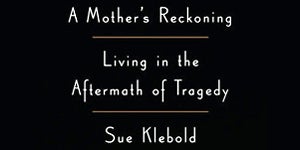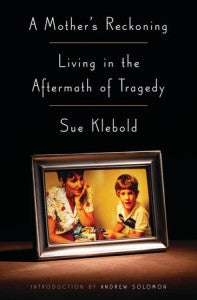Three Questions for an Editor: Crown’s Roger Scholl on A MOTHER’S RECKONING
 Roger Scholl, Vice President, Executive Editor, Crown Publishing Group, delves inside the acquisition, editing and impact of A MOTHER’S RECKONING: Living in the Aftermath of Tragedy by Sue Klebold, the mother of Columbine shooter Dylan Klebold. In this book, Ms. Klebold chronicles for the first time her journey as a mother over the past sixteen years, trying to come to terms with the incomprehensible following the tragic events of April 20, 1999, when her son Dylan and his friend Eric Harris walked into Columbine High School in Colorado, killed twelve students and a teacher, and wounded twenty-four others before taking their own lives. In coming forward after so many years of silence, Ms. Klebold writes with unflinching honesty, telling her story as faithfully as possible in order to share the insights and understanding she has gained in the terrible crucible of Columbine to help other families recognize signs that a child may need help.
Roger Scholl, Vice President, Executive Editor, Crown Publishing Group, delves inside the acquisition, editing and impact of A MOTHER’S RECKONING: Living in the Aftermath of Tragedy by Sue Klebold, the mother of Columbine shooter Dylan Klebold. In this book, Ms. Klebold chronicles for the first time her journey as a mother over the past sixteen years, trying to come to terms with the incomprehensible following the tragic events of April 20, 1999, when her son Dylan and his friend Eric Harris walked into Columbine High School in Colorado, killed twelve students and a teacher, and wounded twenty-four others before taking their own lives. In coming forward after so many years of silence, Ms. Klebold writes with unflinching honesty, telling her story as faithfully as possible in order to share the insights and understanding she has gained in the terrible crucible of Columbine to help other families recognize signs that a child may need help.
In this Three Questions for an Editor feature, Mr. Scholl opens a very personal window into the road to the publication of A MOTHER’S RECKONING.
 What was involved in the acquisition of this book and key decisions about how to tell and structure this heart-breaking, tragic story?
What was involved in the acquisition of this book and key decisions about how to tell and structure this heart-breaking, tragic story?
I first heard of the book as the result of a lunch date with the agent, Laurie Bernstein, two years before the actual submission. Sue Klebold’s story, and message, sounded so unique, and so important, that I followed up periodically to express continued interest. Laurie gave me a heads up a week before she sent it out, and I alerted our publisher and the rest of our team that it was coming in, so that we would read and act quickly. The proposal came in the Thursday evening of BEA; I was expected at a reunion party, but I never made it – I was glued to my desk and my computer. The proposal, over 100 pages in length, was stunning — and pitch perfect in conveying Sue and her family’s experiences, and her ultimate message. And we made a pre-emptive bid for the book by noon the next day.
How would you describe the editor/author editorial process and what were some of the most challenging and rewarding points during the creation of A MOTHER’S RECKONING?
Sue had been teamed with a wonderful writer for the book, Laura Tucker. The proposal was so taut, so nuanced, and so well constructed that my real task as an editor with the manuscript was to ensure that we maintained the same high level of narrative pacing, detail, insight and candor that Sue and Laurie had originally achieved with the proposal. We did a good deal of back and forth to tighten the narrative, and made a few key decisions about structure and order, as well as about the level of detail Sue included in the book about the events at Columbine High School that morning, so that readers unfamiliar with the details of the tragedy would have a clearer picture of exactly what took place – and what Dylan, Sue’s son, and Eric Harris, did.
What do you and Ms. Klebold hope readers will derive most from reading and discussing this book?
I think that for Sue, this book has been a mission. She has spent every day of her life since the shootings trying to understand how the sweet young boy that she knew Dylan to be could have done what he did; why she was unable to see the signs beforehand; what she might have done differently to prevent the tragedy. The media wanted to paint Dylan as a monster. But the truth, she knew, was in some ways even more disturbing. He grew up in a loving, engaged home, had many friends, and although he was shy and perhaps spent too much time on his computer, he came across as a normal teenager, a boy who had just gone to senior prom and had been accepted to his first choice college. Her husband, Tom – they are now divorced – and her surviving son Bryon, were deeply opposed to her writing the book; it was just too painful a memory, and one I think they did not want to live through again. But Sue persevered because she felt that by telling her story, and the story of Dylan, she could reach out to parents and kids who were suffering emotionally or psychologically, and at risk, and in doing so potentially prevent a future Columbine from taking place, or prevent a child from hurting himself or herself, or someone else. Sue is donating the money she has received to charitable organizations, particularly those focused on mental health issues.
